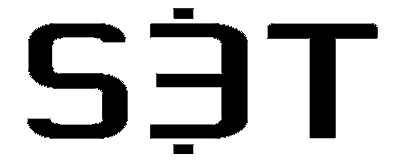S3T Sunday Feb 5 - Productivity losses, Future of housing, Aptos, Mini-ultrasound tech, Biotech arms race, Enterprise blockchain, FROG jam, Duck hybrids & gender change

Macro - Disinflationary?
The Fed raised rates a quarter point on Wednesday this week, claiming a "disinflationary" process had begun. Friday's stunning jobs report called that into question, as the US added 517k jobs in January and unemployment dropped to a 54-year low. Recent indicators have suggested a slowing global economy, but labor force projections back to 2013 have anticipated a tightening labor market in the US.
The core PCE index rose 0.3% last month, lowering the 12-month inflation rate to 4.4% (vs. 4.7% in Nov and 5.1% in Oct)
— Nick Timiraos (@NickTimiraos) January 27, 2023
+2.9% at a three-month annualized rate (the lowest since Jan '21)
+3.7% at a six-month annualized rate (the lowest since Mar '21)https://t.co/aqolhkuvrB pic.twitter.com/kZ31xyR0yi
On the news crypto and stocks seemed to hold steady. By Wed evening, Ethereum, BTC and most of the top 100 by market cap moved sharply higher (more about winners and losers here).
NLW offered a good summary on the week, including notes on indicators of possible behind-the-scene rethinking of inflation at the Fed (about midway through the podcast).
Rethinking inflation measurement would be a welcome development. Here's why...

Some causes of inflation don't respond to interest rates
Inflation (the reduction in what a dollar can buy) can come from multiple factors (deeper dive here):
- Unusual events like wars, pandemics, or large shifts like the current shift from a globalized to a multi-polar world economy. When these shifts disrupt supply, the continued demand causes prices to rise.
- Opportunistic pricing where companies set pricing independently from the actual cost of the good (pharmaceuticals come to mind).
- Services delivered by opaque bureaucracies that resist efficiency (healthcare) and suppress competition (finance), enabled by complicit regulators.
- The acceleration of technological and scientific discovery introduces new cost elements to entire industries: the cost of continuously updating the knowledge of employees, updating the functionality of platforms and updating policies of the organization. This is a new and very significant form of cost that older economic models did not forsee.
- New risks which drive up costs associated with new forms risk mitigation: cybersecurity, terrorism, climate change as well as the risks and costs of adopting/learning how to manage new innovations.
- New awareness and resolve for addressing social justice and health equity - a welcome and necessary development - but it drives new kinds of costs. For example, data systems need to be upgraded to integrate social health data so healthcare orgs can be held accountable to ensure adequate access to care.
Interesting point about these last three bullet points. Our traditional definition of "progress" presumed that technology and science would automatically bring productivity gains for businesses and rising standards of living for all. 2% inflation felt right in that world. Only problem is, these assumptions just aren't true.

Progress - not what you think
Progress can bring productivity losses not gains, and often creates standards of living disparities. Here are a few examples that we're learning about now:
- "Progress" can create productivity losses - people who have to start over in learning new systems or new processes. Or have to take on new sets of tasks that weren't previously necessary (see resetting passwords segment below).
- "Progress" can create skyrocketing standards of living for a few, but slumping standard of living for most. Note for clarity: being able to buy stuff for cheap at Walmart is not "rising standard of living" especially if the cost of child care, healthcare and education is going through the roof.
These are examples of factors that increase the cost of providing a good or service. Let's take one simple example.
Example of new costs in the ecomomy: resetting your password
Enterprise security is an example of a new necessary cost that did not exist for most companies when current economic models and assumptions about inflation were formed. What follows here is one small implication, but it illustrates how these costs add up.
Consider the math:
- 163 Million workers in the US per the Bureau of Labor
- 130 Million (80% per Wired estimates) forget a password ever 90 days, or 4x a year.
- This comes out to 521 Million forgotten passwords...
- which adds up to 26 million hours resetting passwords, assuming each instance requires only 3 minutes (does not include the time for IT support or others to help).
- If the average work year is 2000 hours, this means the economy is now supporting the equivalent of 13,000 more workers for the task of resetting passwords.
- If the average annual salary is 60k (per the Social Security Admin's latest wage index), this means US companies are absorbing $798 billion in additional costs ...for resetting passwords.
These kinds of cost-additions occur as new platforms, capabilities and associated threats and issues continue to emerge at an accelerating pace.

Its safe to say that today, there is more work to be done than at any time in history, and this work is more urgent, complex, and requires more education and expertise.
Summary: Rates, Banks and People
Raising or lowering interest rates may change the behaviors of banks, but has no bearing on the mechanisms that inflate these prices to higher and higher levels year after year.
Rate setting also offers no assistance to the families who've been impacted for years by rising costs in healthcare, child care, education and other vital needs.
To understand the disparity:
- Banks play a gatekeeper role - as such they make decisions about loans, fees, lines of credit, and services that disproportionately impact non-wealthy wage earners.
- These gatekeepers have shown that they systematically act to preserve the capital of the top 10% wealth holders, while throwing crumbs and fees to the rest.
It's a bit like a water rationing scheme where the people hoarding the most water are allowed to control how much water is shared with those who have the least.
In other words,
